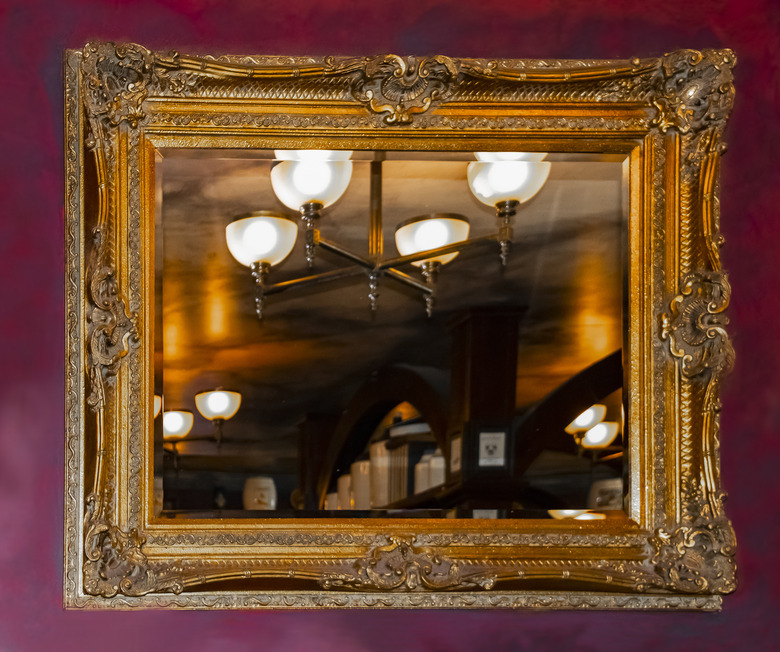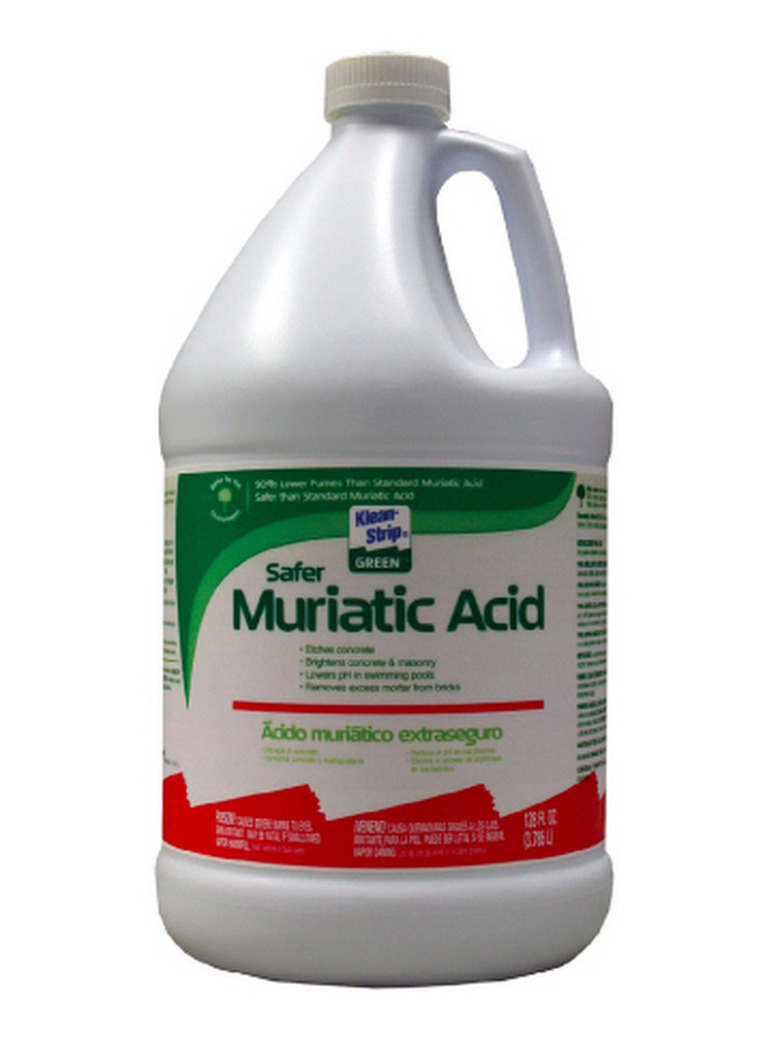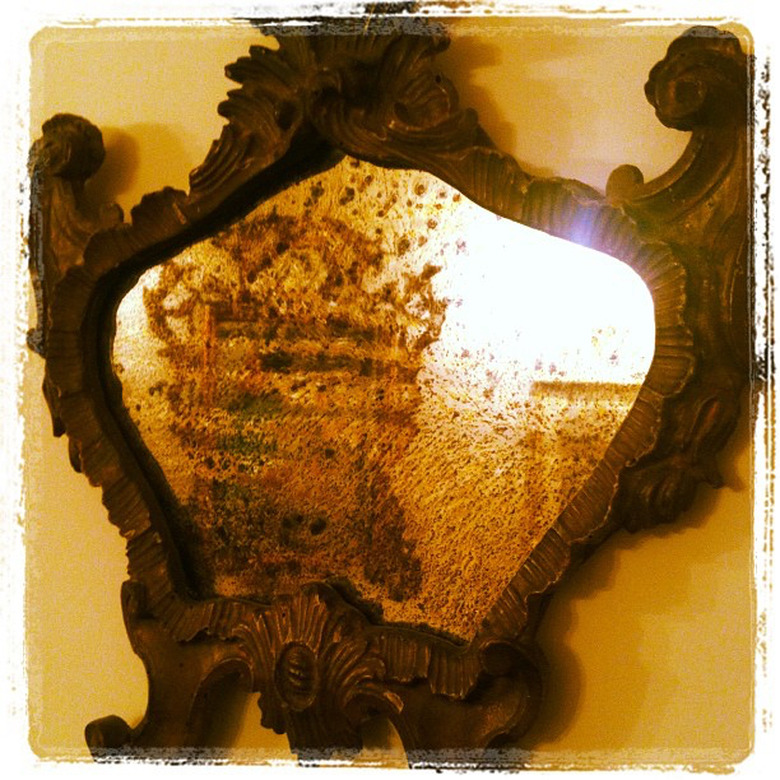How To Antique A Mirror
Because they enhance light and seem to enlarge spaces, mirrors are essential for home décor. With their dark, tarnished speckles, antique mirrors have a character all their own. This effect is caused by the reflective silver, mercury, or tin coating on the back of the glass oxidizing over time. Buying an authentic heirloom will set you back, however—the cost of those bygone beauties is high. With just a little effort, though, you can make your own at a fraction of the cost.
Warning
Work in a well-ventilated area—or preferably outdoors—because you'll be handling highly toxic chemicals. Make sure to wear a respirator, safety goggles, and disposable gloves any time you're handling these chemicals. Finally, read all the instructions before you begin, to make sure you understand all the steps to take.
Things Needed
-
A mirror (can be framed or unframed)
-
Old newspapers/paper bags/butcher paper or thick plastic sheet
-
Respirator
-
Safety goggles
-
Disposable gloves
-
Paint stripper (aerosol or gel style)
-
Putty knife or other scraper
-
Mineral spirits (if required to clean off the paint stripper; see manufacturer's instructions)
-
Paper towels
-
Empty spray bottle
-
Plastic funnel
-
Muriatic acid (available at hardware or home improvement stores) or bleach
-
Black, gray, or antique gold spray paint
The process of antiquing a mirror involves removing one of two coats applied to the back of the mirror. Mirrors have two coats on the back surface—a reflective coating applied directly to the glass, and a layer of paint, usually gray or black, applied over the reflective coating. Antiquing a mirror involves carefully removing the paint layer, then "distressing" the reflective layer to make it look old, and finally repainting the mirror over the distressed reflective layer.
1. Stripping the Paint Layer
Remember that paint strippers are caustic, so use care when working with them. Use protective gloves and take care not to spill the stripper on other surfaces or your clothing. If possible, work outdoors or in a utility area where there is good ventilation and lighting.
- Cover the area with a thick layer of newspaper or a plastic sheet. If the mirror is framed, carefully remove it from the frame. Place the mirror back side up on the work surface.
- Spray or apply a thick layer of aerosol paint stripper to the back of the mirror. Leave it on until it loosens the layer of paint, following the manufacturer's instructions; this usually takes about 15 minutes. Make sure not to leave the stripper on so long that it begins to dissolve the reflective coating.
- Use a scraper or putty knife to gently remove the paint, taking care not to damage the reflective film or the mirror itself. If the paint doesn't come off, you may have to apply several coats of paint stripper in succession. Discard the removed paint.
- Referring to the instructions on the paint stripper, use either mineral spirits or a damp paper towel to clean off the back of the mirror. Make sure the stripper has been entirely removed.
- Finally, dry the mirror thoroughly with additional paper towels.
2. Distress the Reflective Coating
A naturally aged mirror will have spots on the glass where the reflective material has worn away. Your goal when antiquing a mirror is to simulate this effect. But be careful; removing too much reflective surface will ruin the mirror.
- Using a plastic funnel, carefully fill a spray bottle with muriatic acid or bleach. Take care not to spill the liquid on any surfaces, and make sure to wear protective gloves.
- Spray a light amount of muriatic acid or bleach onto several areas on the back of the mirror. Wherever the chemical lands, it will eat away the reflective coating. It's best to remove the reflective on in spots rather than in large areas, so apply the liquid selectively and don't dowse the mirror. Muriatic acid works quickly—typically in a minute—whereas bleach could take as long as 48 hours.
- Once you can see through spots in the glass, wipe off the bleach or muriatic acid with a dry paper towel.
- Rinse the mirror with water and dry it thoroughly.
Tip
Old mirrors have more tarnish on the edges, so make your mirror look more authentic by spraying the edges rather than the center of the glass.
3. Repaint the Back of the Mirror
Once the mirror is dry and clean, spray the entire back of the mirror with spray paint. The paint will protect the reflective coating, but it will also show through in spots on the front of the mirror. Antique gold spray paint will result in a lighter appearance, while gray or black paint creates a moody look. Allow the paint to dry overnight, then, if the mirror was originally framed, reassemble it.


